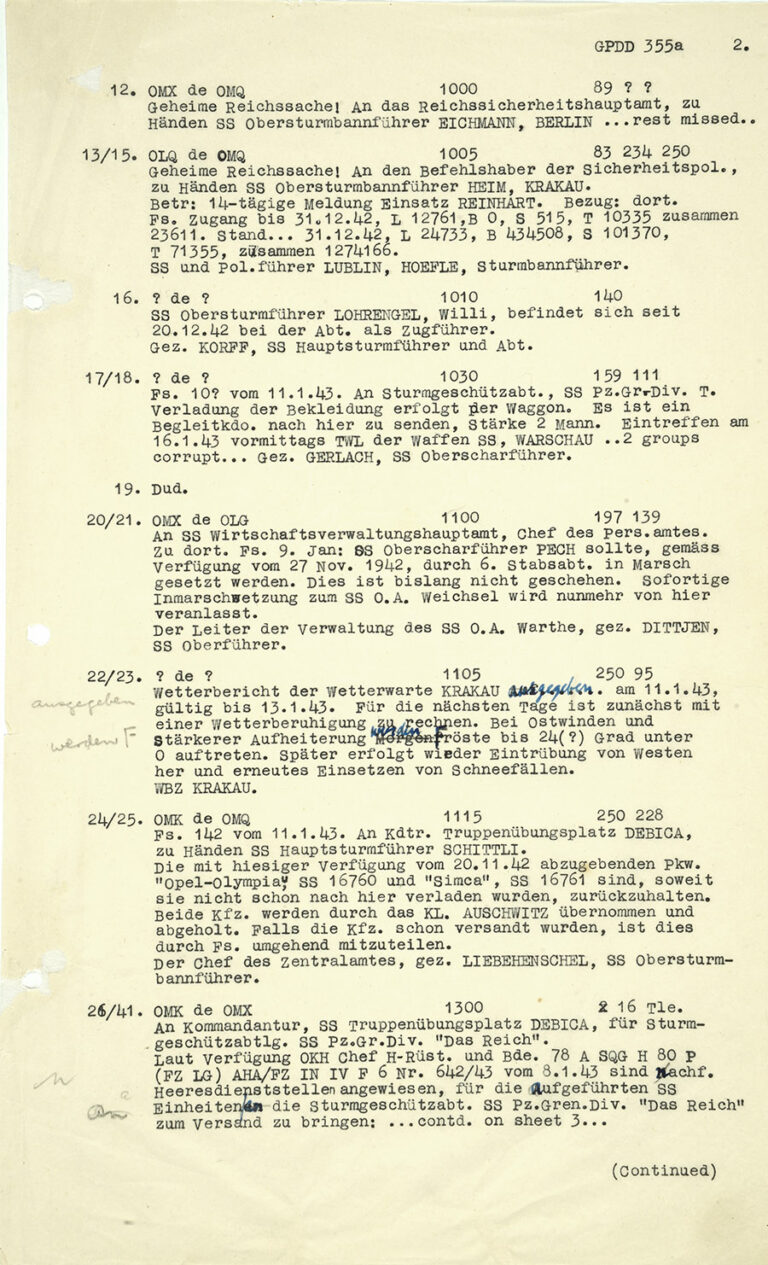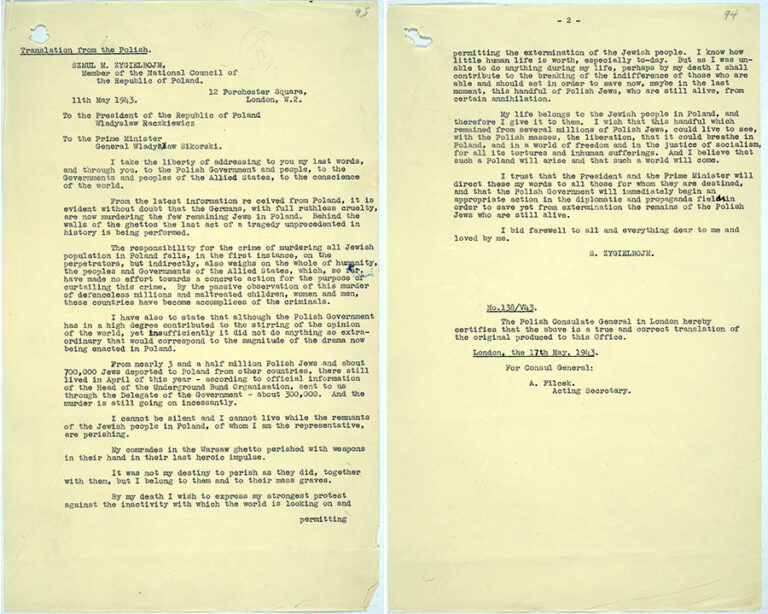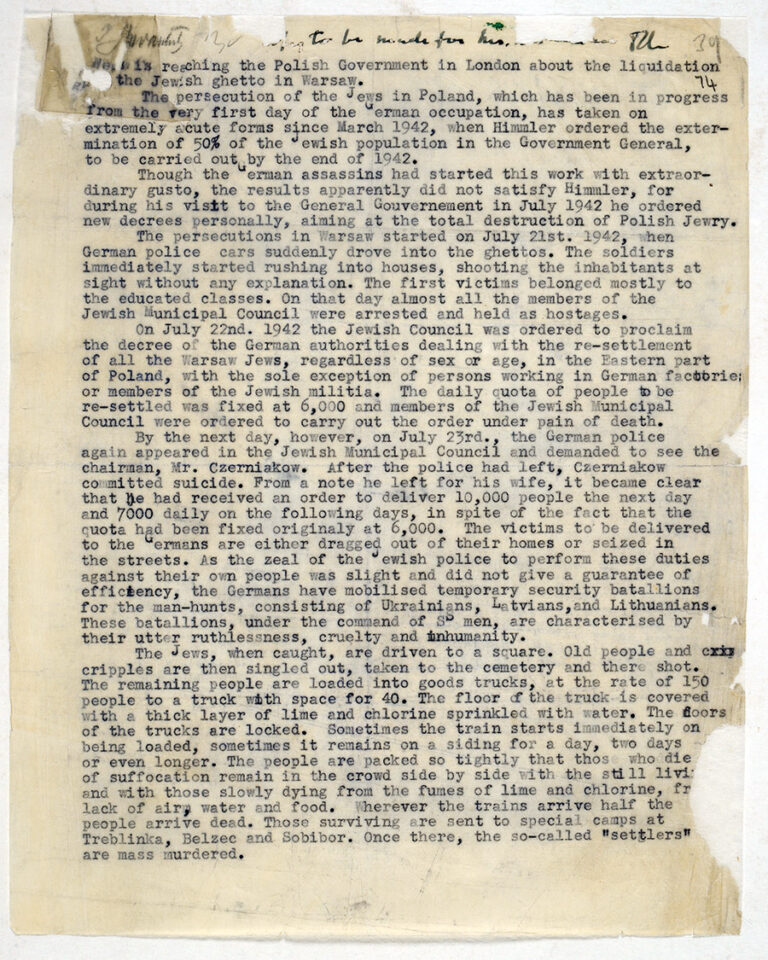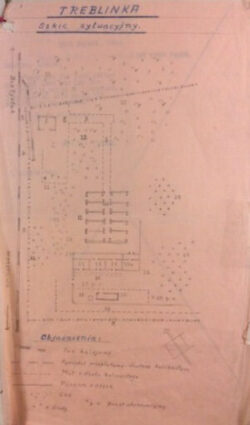After almost six years in the making, Imperial War Museums (IWM) London opened new Second World War and The Holocaust Galleries on 20 October. A key part of the exhibition is the Hoefle Telegram, loaned by The National Archives.
Discovered in 2000 in our Government Code and Cypher School collections (HW) and arguably the most important find in the history of the Holocaust this century, this message was among many decrypts of German Police communications decoded at Bletchley Park during the Second World War. It is not known whether its significance was understood at the time.

The Hoefle Telegram records the exact number of victims in the death camps of Majdanek, Belzec, Sobibor and Treblinka up to the end of 1942. It is a fortnightly statistical report of the arrivals at these camps, which were built for extermination purposes only following the decisions made at the Wannsee Conference in January 1942 by high-ranking Nazi officials. The plan to implement the destruction of European Jewry was known as Operation Reinhart.
TRANSLATION:
State secret! To the commander of the Security Police, for the attention of SS Obersturmbahnfuhrer HEIM, CRACOW. Re: 14-day report operation REINHARD. Reference: radio telegram from there
Recorded arrivals until December 42, L 12761, B 0, S 515, T 10335, totalling 23611. Situation 31 December 42, L 24733, B 434508, S 101370, T 71355, totalling 1274166. SS and police leader of Lublin, HOFLE, Sturmbannfuhrer
(There is an error in recording the number sent to Treblinka, which is missing a digit).
Two other facsimiles which can be found in The National Archives’ collection are also displayed in the Holocaust galleries and tell us of the knowledge Britain had about the Holocaust at the height of Operation Reinhart.
The first is a letter written by Szmuel Zygielbojm. He was born in Poland and was an active member of the Bund – a Jewish socialist party in Poland. After escaping from Poland and reaching Belgium in December 1939 he fled to France in 1940. From there he travelled to the US, where he campaigned about the plight of the Jews in Poland. In 1942 he was elected member of the Polish National Council, a body of the Polish government-in-exile based in London.

In London, he received early reports from sources within Poland about living conditions of Jews, the deportations and mass killings. In January 1943 he met with the Polish courier, Jan Karski, who was sent to Warsaw by the Polish government-in-exile to report back on the general situation in Poland. Karski brought back much needed information about the situation of the Jews in Poland, in particular of those Jews living in the Warsaw Ghetto and those waiting to enter the death camp of Belzec. His reports were passed on to the British government. Some of the information had already been published in December 1942 by the Polish government-in-exile in a pamphlet called ‘The Mass Extermination of Jews in German Occupied Poland’.


The exhibition is comprehensive. The opening gallery displays a giant billboard with rolling images of forgotten places. The statement on the wall, with no mention of victims or perpetrators and devoid of any statistics, suggests a new approach of defining a subject so well-documented. The visitors are encouraged to explore for themselves the events of the Holocaust by walking through a series of rooms.
The bright lights and meditative thrumming sounds which rise and fall as you make your way through the exhibition all add to the experience. The continued use of huge billboards, which are placed thoughtfully in spaces which contain particularly difficult themes, make space for quiet reflection.
A dark opening off one of the larger galleries leads into a small space which displays a few personal objects alongside messages and poetry – all taken from the confiscated possessions of the victims. Two interactive screens show the machinations of the death camps at Belzec and Treblinka. It is between these installations that the Hoefle Telegram is displayed.
The Hoefle Telegram is on display at the IWM London Holocaust Galleries until April 2022.
Further reading
You can find out more about our records relating to the Holocaust here:
- www.nationalarchives.gov.uk/education/resources/holocaust/
- blog.nationalarchives.gov.uk/death-hanging-nuremberg-trials/
- blog.nationalarchives.gov.uk/forgive-forget-quickly/
- blog.nationalarchives.gov.uk/holocaust-refugees-displaced-persons-immediate-post-war-years/
- www.nationalarchives.gov.uk/education/resources/kindertransport/
For more information on the IWM Holocaust Galleries visit www.iwm.org.uk/events/the-holocaust-galleries.